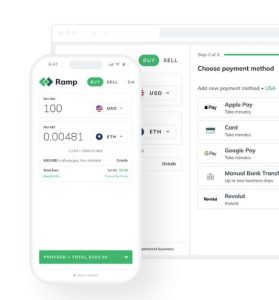Art market in the Digital Age

How NFTs are Revolutionizing Wealth Disparities in the Art World
From Patronage to Market: Understanding Wealth Disparities in the Art World
Market Boom and Wealth Disparities
In the 19th century, as the cultural market began to develop, many artists hoped for better times ahead. Emile Zola, a 19th-century writer, welcomed this new market. He saw it as an opportunity to be free from the capricious whims of art patrons. Charles Mackay’s book, “Extraordinary Popular Delusions and the Madness of Crowds,” serves as an important reference. The heightened sensitivity to events could lead to unforeseen consequences.
Lahire (2006) argues that many writers did not benefit from the new system. Many of them even starved to death. This sad truth mainly concerns the literary tradition in France. There, only a few artists achieved success, while the rest struggled.
In France, despite its rich and varied literary tradition, only a small group of artists managed to gain recognition and become widely known. Many of them had access to the necessary resources, connections, and promotional platforms that enabled them to achieve success. However, the vast majority of literary creators faced numerous challenges.
Less renowned artists struggled with a lack of means for a livelihood. They also had difficulty being recognized in the literary community. Additionally, they had limited access to distribution channels. Many wrote with passion and commitment. Nevertheless, their works were often unrecognized and unpublished. These pieces failed to attract a wider audience. The inequality in literature highlighted challenges for artists of that era. They aimed to break through in an environment that was often unsupportive.
Traditional Barriers in the Art Market
While the art market became more accessible, barriers persisted. The phenomenon of wealth concentration was evident, not just in literature but in other artistic domains. Singular artists could earn millions, while thousands could barely make ends meet.
NFTs – The New Era in Art
What are NFTs?
NFTs, or Non-Fungible Tokens, are a revolutionary blockchain technology that allows artists to digitize their works and sell them instantly without intermediaries. This means that, regardless of location or reputation, an artist can have direct access to the global art market.
Artist in the Digital World. In today’s era, artists face countless challenges. They need to capture the audience’s attention in an overcrowded digital realm, and they must combat plagiarism and counterfeits. However, with the advent of NFTs, doors to new opportunities began to open.
Undeniable Authenticity and Protection Against Forgery. One of the most significant advantages of NFTs is their uniqueness. Each token is indisputably linked to a specific piece of art. Thanks to blockchain technology used in creating NFTs, each artwork can be verified for its authenticity. When an artist creates an NFT of their work, they also establish an undeniable digital trace that confirms their ownership rights and origin. In practice, this means that counterfeiting and falsifying artworks become almost impossible.
Instant Access to the Global Art Market. Traditionally, artists found it challenging to gain international attention. Selling their pieces globally without the support of major galleries or agents was a significant hurdle. However, in the Digital Age with NFTs, this barrier has been eliminated. An artist, regardless of their location, can display their works on global platforms that operate on blockchain technology, like OpenSea or Rarible. However, uni.Decentral-Art focuses on actual paintings and their digitization.
This means that an artwork created in a small studio in Poland can be viewed and appreciated worldwide. An art collector in New York, Tokyo, or Rome could acquire it. Thanks to NFTs, artists no longer have to worry about shipping logistics, customs, or intermediary commission.
NFTs’ Advantage Over the Traditional Art Market
The primary advantage of NFTs is the democratization of market access. Instead of relying on galleries, agents, or auctions, artists can independently determine the value and distribution of their art. Artworks become more accessible to a wider audience, and artists receive direct compensation for their labor.
Are NFTs the Solution to Art World Disparities?
The Potential and Usage of the Technology
While NFTs offer immense potential, it’s crucial for artists and buyers to be informed about its capabilities and limitations. Education and understanding of NFTs’ functions can help harness its full potential.
A Glimpse into the Future
NFTs may be a step towards a more balanced and democratic art market. However, like any revolution, it’s vital to monitor and adapt to its evolution to ensure that the benefits brought by NFTs serve all artists, not just a select few.
In the digital age, where technology is reshaping many aspects of our lives, the art market is also undergoing a transformation. Thanks to NFTs, artists are provided with a new platform and opportunities that can help break the barriers and inequalities that have long dominated the art world.


